
Focus Topic 2021/2022
Sustainable Food Future(s) 2040
The Foresight team developed a holistic outlook on the future of the global food value chain and derived new innovation opportunities for a sustainable food production.
Feeding the world's population is one of the great challenges of our time. A challenge that will become even greater in the future: Population growth, malnutrition, climate change, unsustainable farming practices and the rising meat consumption in Asia and Africa are just a few examples of trends that lead to one conclusion: To feed the world sustainably and end world hunger, the food value chain must be transformed.
Therefore, the Foresight focus topic had to create a holistic perspective on the global food value chain beyond chemistry. In collaboration with both internal and external experts, the Foresight team conducted a structured future analysis of the entire food value chain. Based on a systematic review of the trends and technologies driving change and transformation along the food value chain, the project identified promising innovation search fields and derived potential medium- to long-term business opportunities for Evonik.
Towards a more sustainable food system: Key Food System Transformations
Transformations are taking place in many different areas and on different levels of the food value chain. Take a look at selected examples of these changes.
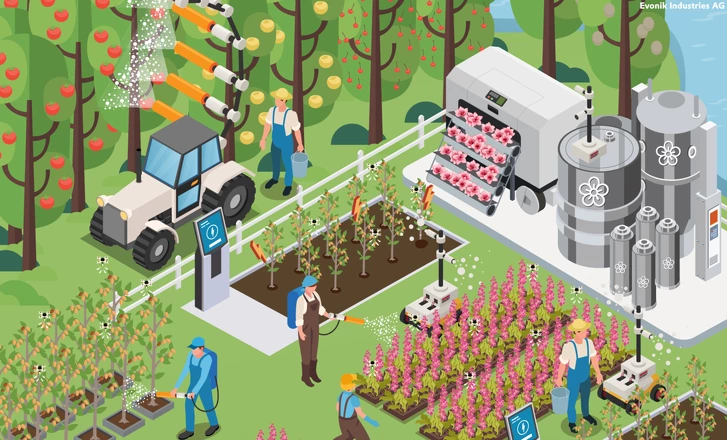
Around the globe, activities are growing to repair or replace ecosystem services that were lost due to environmental pollution, destruction, or climate change. Solutions range from geoengineering to biotech applications to alternative farming practices. One example for this is pollination. Climate change, land use, and a range of other factors are causing a decline of natural pollination processes in many areas worldwide. This will likely have increasingly negative impacts on crop yields and quality and could also have wider ecosystem implications. Our visual depicts several artificial pollination approaches, such as precision pollination robots being pioneered today or micro-drones imitating insects as they might be used in the future.
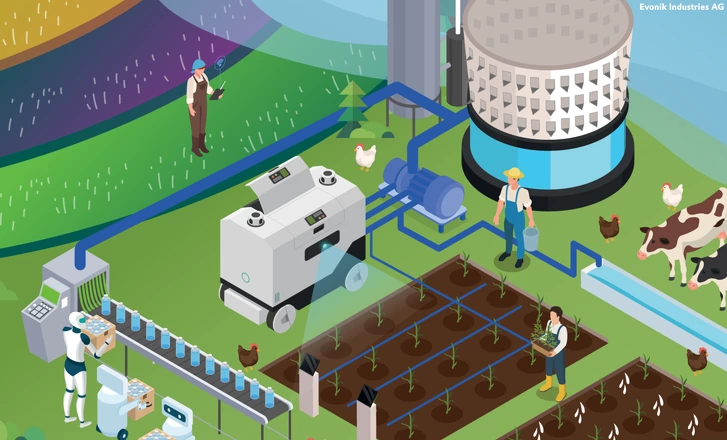
Dwindling fresh water supplies are becoming a massive challenge – from access to clean water in the poorest regions of the world to the increasing competition for water for agricultural or industrial purposes and use in urban areas in many high-income countries also. Besides increasing water use efficiency, creating additional sources of water supply becomes critical. Depending on the region, solutions can vary from atmospheric moisture capturing to increasing the water storage capacity of soils to replenishing subterranean aquifers with flood water.
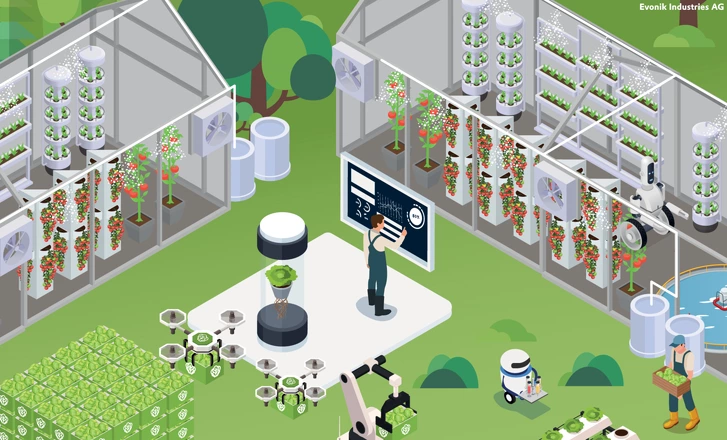
With weather conditions becoming less predictable, there are a variety of activities to shift part of agricultural production away from arable land and towards new, technologically designed and controlled places for cultivating crops and vegetables. High-tech indoor farms, including vertical farms, are among the prime examples of this transformation. Often, these approaches employ new methods for growing plants that use other grow media than soil – as in traditional farming – to provide a substrate that anchors the plants and assists in delivering water, nutrients, and oxygen to the plant roots.
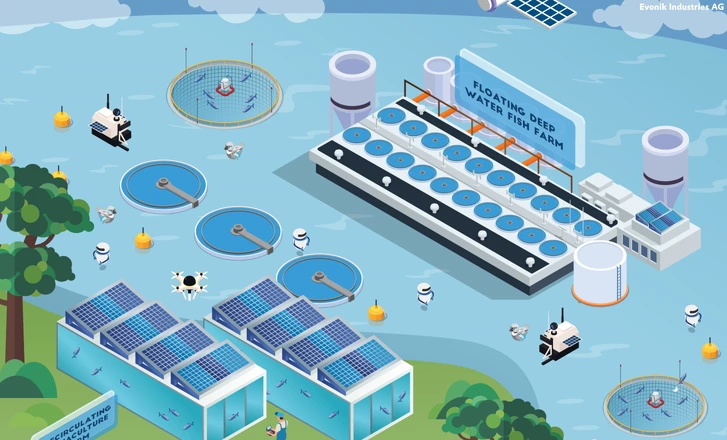
If the world heeds the call for healthier, more sustainable diets, then the way humanity produces animal protein is set to become one of the defining issues. A wave of innovation and – in some parts – a fundamental redesign of approaches will be required to reduce the environmental impact of animal protein production. Take the example of aquaculture: Novel concepts of fishery are expanding the production system to new and innovative locations, such as deep-water fish farms or on-shore aquaculture with recirculating systems.
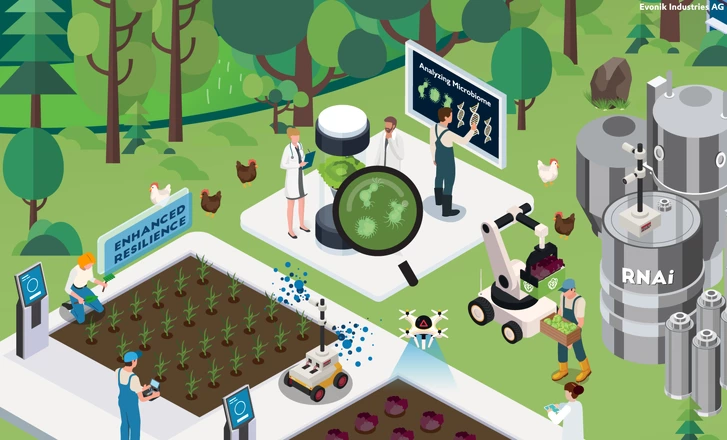
The creation of synthetic fertilizers and plant protection products in the 20th century was a turning point in human history, enabling a massive increase in crop yields and a population boom. However, indiscriminate use of these agrichemicals has become a main contributor to nonpoint environmental pollution. Also, some conventional plant protection techniques are seeing declining efficacy. This is driving the emergence of novel approaches such as biostimulants or RNA interference that aim at maintaining or further improving crop yields and quality while also reducing negative impacts on the environment.
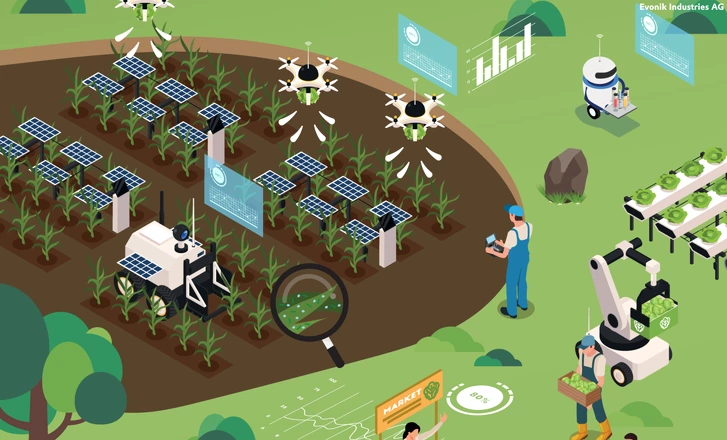
The digital transformation is changing the way that crops are farmed. Digitalization is enabling greater automation in agriculture, e.g., by self-driving tractors, automated irrigation systems, or other software-based or robotic solutions. Due to technologies such as precision delivery of agro-chemicals or AI-supported farm management, farming becomes increasingly data-based and more efficient. Digital solutions promise to increase yields and profitability while allowing lower levels of traditional inputs – land, water, fertilizer, etc. – benefitting both farmers and the environment.
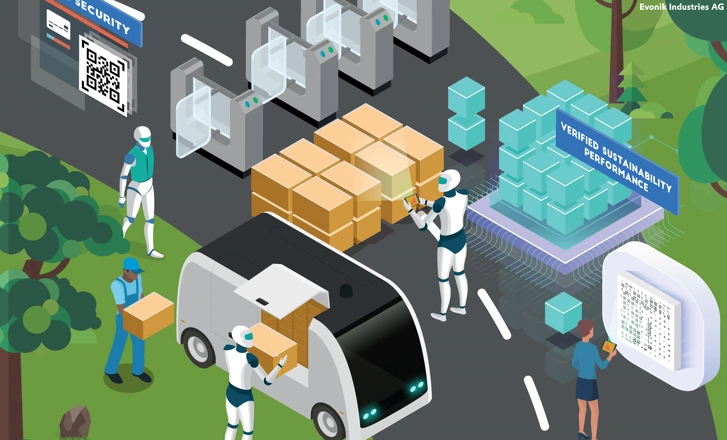
Deforestation, depleted soils, or overfished oceans – these are just a few prominent examples for how food production is causing negative environmental impacts around the world. Yet, for the most part, these environmental consequences or, as economists would say, negative externalities are not reflected in the retail prices of food. Therefore, a growing number of stakeholders are pushing for a “true cost” accounting for food products that takes these externalities into account. With such an approach, the prices of food products would need to be adjusted for their full environmental, economic, and social costs. Over time, consumers would shift to buying products with lower external costs, which would in turn favor the transition from an on average extractive to a regenerative food production system. True cost accounting, however, is not a trivial matter. Its introduction will require solutions for much more transparency of sustainability performance along the food value chain.

Spoiled food is both a health hazard and a waste of natural resources. New forms of food preservation are emerging that promise extended shelf-life and – in some cases – also improved nutrient preservation. Examples for such advanced techniques are pulse electric field treatment, ultrasound-assisted freezing, nanomaterial-enhanced packaging, or the controlled release of bio-preservatives such as plant metabolites.
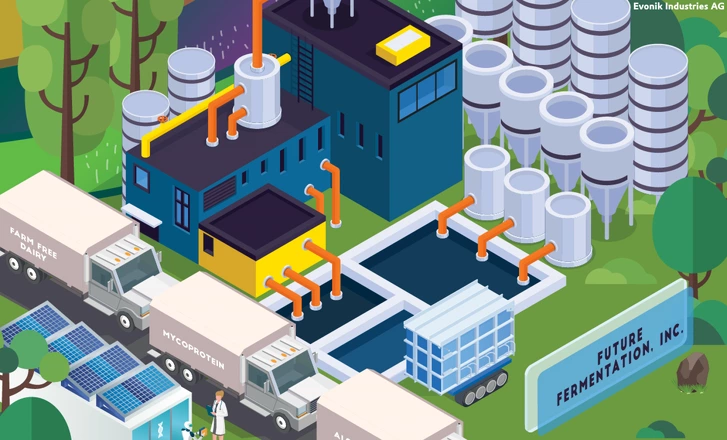
Awareness of the environmental impact of animal-based diets has been increasing drastically. These environmental concerns, together with health and animal welfare issues, are driving changes in consumer behavior. Consumers more often choose alternatives to animal-derived food and turn to increasingly available plant-based options. However, plant-based products often lack in taste and functionality compared to animal derived counterparts. In response to these shortcomings, microorganism-derived proteins such as fermentatively produced milk and egg proteins, for example, are being implemented as more sustainable, yet functionally similar alternatives. Thus, going forward food products that are traditionally sourced by farming animals could increasingly be produced farm-free at industrial scale.
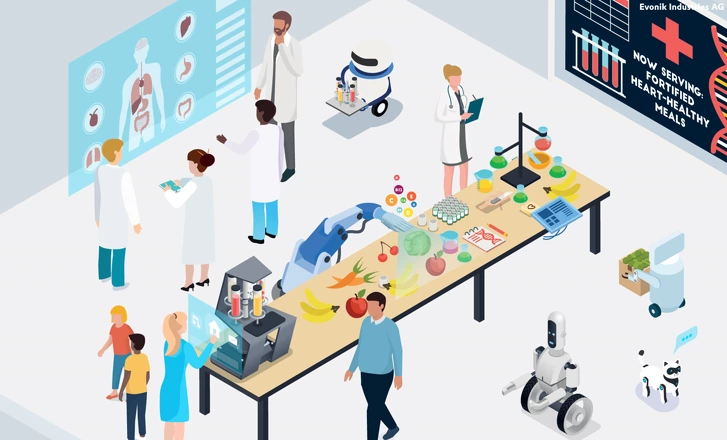
More and more, the links between nutrition and health are becoming apparent. Various scientific studies show that diseases such as colon cancer, diabetes or Parkinson's disease could be prevented or managed by a change in diet. While currently much of that knowledge remains unused, growing awareness for wellbeing and prevention combined with the needs of ageing populations will continue to drive a sophistication of consumer demands. Given the very diverse needs of consumers, future food-as-medicine products from nutraceuticals to neuroprotectives to even nutrigenomic foods will address a wide variety of target groups.

Avoidable food waste has massive nutritional, economical and ecological implications. The abundant volumes of food waste generated globally amount to a colossal waste of ultimately scarce resources. About 1.6 billion tons of food waste are generated annually, theoretically enough to feed about 2 billion people. Currently, food waste is mainly landfilled, and only smaller amounts are recycled or used for energy recovery. Around the world, significant research and development efforts are made to shift food waste treatment approaches to resource recovery. Due to its organic and nutrient-rich composition, it is hoped that more waste can be economically converted into bio-based products such as bioactive compounds, biofuels, or bioplastics.

Food packaging materials need to facilitate handling, storage, transport, and hygiene and maintain freshness. However, packaging is sometimes perceived as superfluous and wasteful and especially plastic packaging has become a contentious topic to many consumers driven by the growing environmental challenge of plastics pollution. An estimated 140 Mt of plastic packaging are produced annually, and demand is projected to grow. To solve this challenge, many widely-used packaging materials will need to be replaced with sustainable alternatives and recycling system improved to stem the build-up of plastic waste. This is driving the search for more sustainable packaging alternatives, such as biobased, biodegradable and/or recyclable materials.
